Astrophysical and Planetary Sciences
 Scientists have found what may be the universe’s lost sock at the back of the dryer—answering a long-running mystery that astrophysicists have dubbed the “missing baryon problem.”
Scientists have found what may be the universe’s lost sock at the back of the dryer—answering a long-running mystery that astrophysicists have dubbed the “missing baryon problem.”
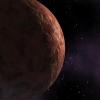 Bumper car-like interactions at the edges of our solar system—and not a mysterious ninth planet—may explain the the dynamics of strange bodies called “detached objects,” according to a new study.
Bumper car-like interactions at the edges of our solar system—and not a mysterious ninth planet—may explain the the dynamics of strange bodies called “detached objects,” according to a new study.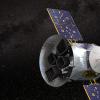 At 6:51 p.m. on April 18, a rocket carrying NASA’s latest space satellite, called the Transiting Exoplanet Survey Satellite (TESS), blasted off from Cape Canaveral. CU Boulder Assistant Professor Zach Berta-Thompson was there. He called the experience “terrifying but incredible.”
At 6:51 p.m. on April 18, a rocket carrying NASA’s latest space satellite, called the Transiting Exoplanet Survey Satellite (TESS), blasted off from Cape Canaveral. CU Boulder Assistant Professor Zach Berta-Thompson was there. He called the experience “terrifying but incredible.”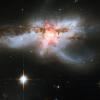 Researchers at CU Boulder have completed an unprecedented “dissection” of twin galaxies in the final stages of merging.
Researchers at CU Boulder have completed an unprecedented “dissection” of twin galaxies in the final stages of merging.
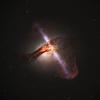 Researchers have caught a supermassive black hole in a distant galaxy snacking on gas and then "burping"—not once, but twice.
Researchers have caught a supermassive black hole in a distant galaxy snacking on gas and then "burping"—not once, but twice. The cross-campus Grand Challenge initiative this week announced the selection of three new additions to the Grand Challenge portfolio starting this fall.
The cross-campus Grand Challenge initiative this week announced the selection of three new additions to the Grand Challenge portfolio starting this fall.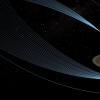 After a highly successful mission, the Cassini spacecraft will give up Saturn's last secrets to CU Boulder scientists before disintegrating in the planet's dense atmosphere Sept. 15.
After a highly successful mission, the Cassini spacecraft will give up Saturn's last secrets to CU Boulder scientists before disintegrating in the planet's dense atmosphere Sept. 15.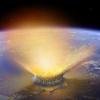 Tremendous amounts of soot following a massive asteroid strike 66 million years ago would have plunged Earth into darkness for nearly two years, according to a news release from NCAR.
Tremendous amounts of soot following a massive asteroid strike 66 million years ago would have plunged Earth into darkness for nearly two years, according to a news release from NCAR.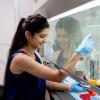 CU Boulder program helps underserved and underrepresented students in the STEM fields gain valuable research experience for graduate school.
CU Boulder program helps underserved and underrepresented students in the STEM fields gain valuable research experience for graduate school. Three University of Colorado Boulder students are among 36 nationwide who have won 2017 Brooke Owens Fellowships for “exceptional undergraduate women” seeking careers in aviation and space exploration.
Three University of Colorado Boulder students are among 36 nationwide who have won 2017 Brooke Owens Fellowships for “exceptional undergraduate women” seeking careers in aviation and space exploration.

